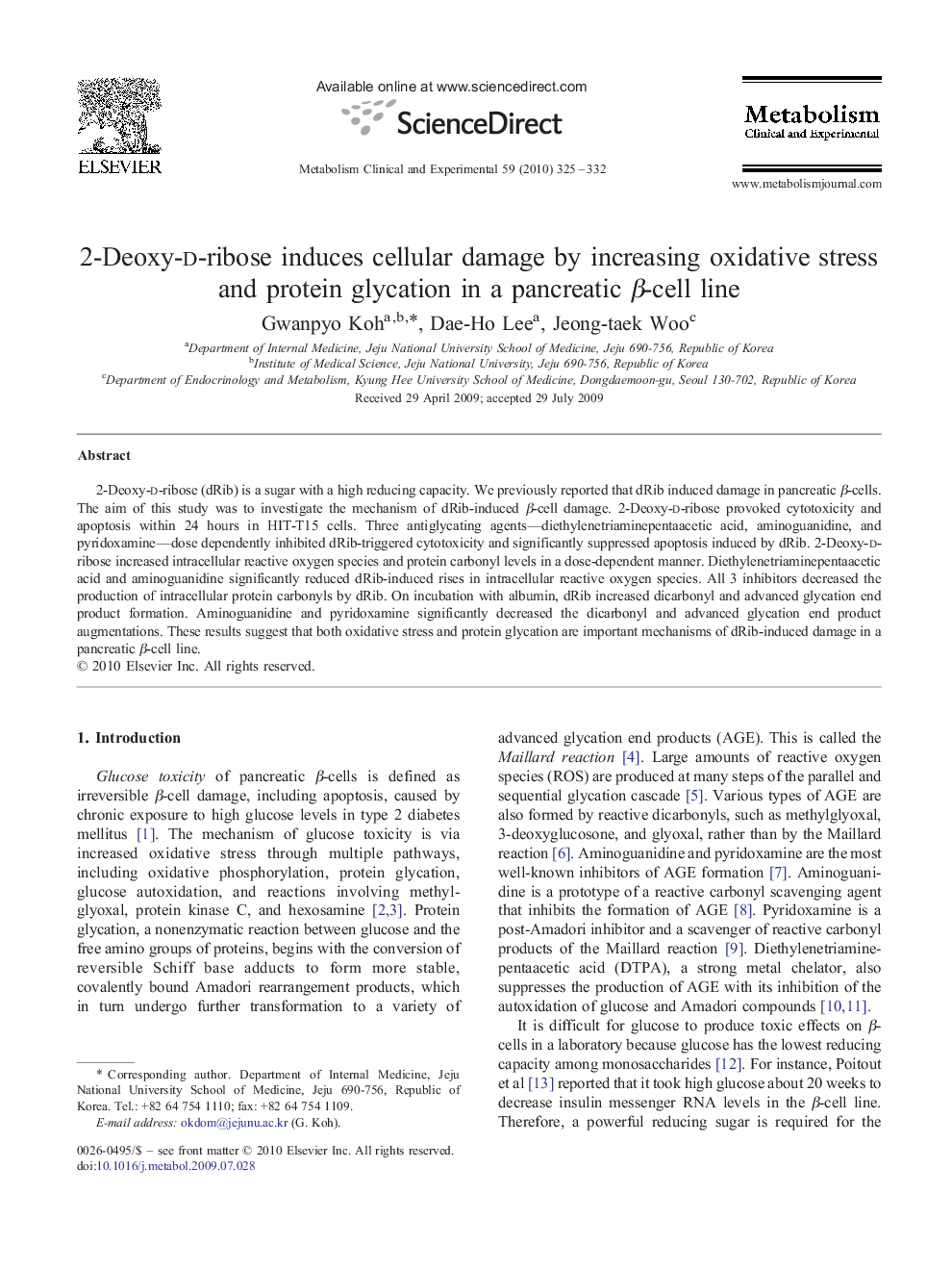| Article ID | Journal | Published Year | Pages | File Type |
|---|---|---|---|---|
| 2807025 | Metabolism | 2010 | 8 Pages |
2-Deoxy-d-ribose (dRib) is a sugar with a high reducing capacity. We previously reported that dRib induced damage in pancreatic β-cells. The aim of this study was to investigate the mechanism of dRib-induced β-cell damage. 2-Deoxy-d-ribose provoked cytotoxicity and apoptosis within 24 hours in HIT-T15 cells. Three antiglycating agents—diethylenetriaminepentaacetic acid, aminoguanidine, and pyridoxamine—dose dependently inhibited dRib-triggered cytotoxicity and significantly suppressed apoptosis induced by dRib. 2-Deoxy-d-ribose increased intracellular reactive oxygen species and protein carbonyl levels in a dose-dependent manner. Diethylenetriaminepentaacetic acid and aminoguanidine significantly reduced dRib-induced rises in intracellular reactive oxygen species. All 3 inhibitors decreased the production of intracellular protein carbonyls by dRib. On incubation with albumin, dRib increased dicarbonyl and advanced glycation end product formation. Aminoguanidine and pyridoxamine significantly decreased the dicarbonyl and advanced glycation end product augmentations. These results suggest that both oxidative stress and protein glycation are important mechanisms of dRib-induced damage in a pancreatic β-cell line.
